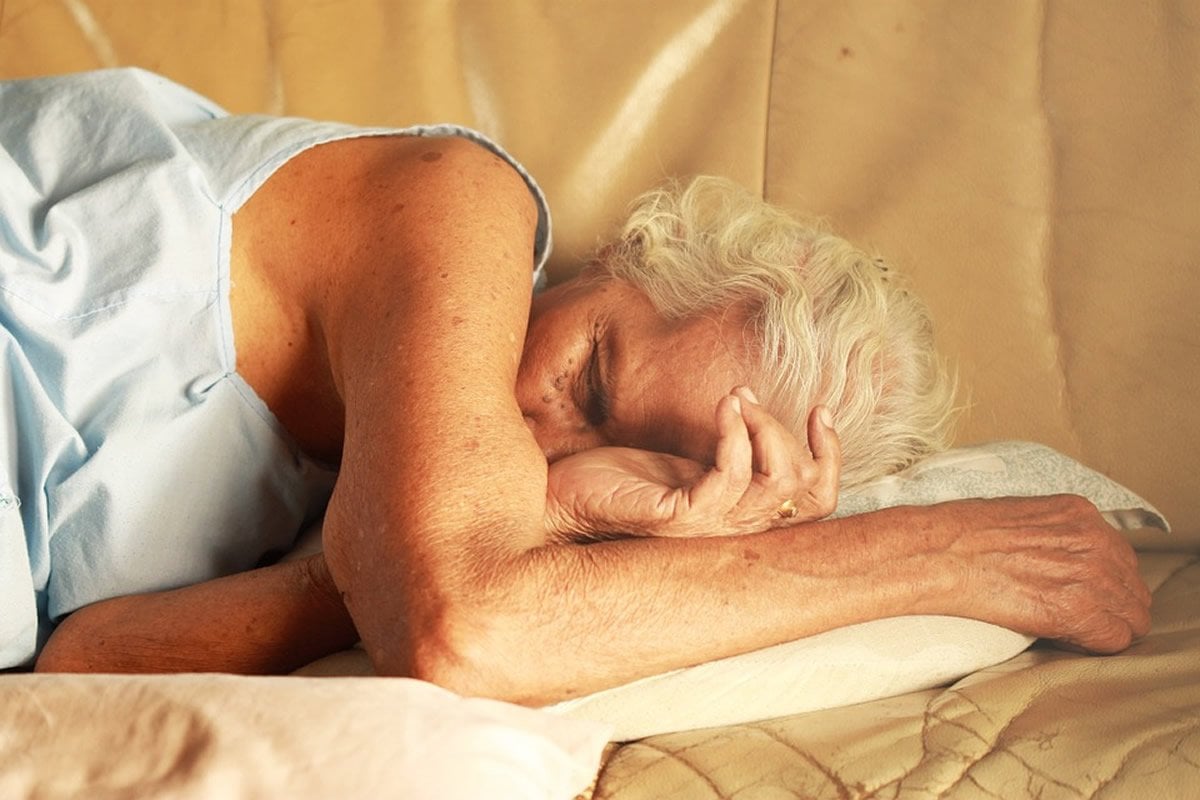Summary: Short pulses of pink noise played during slow-wave sleep can help improve memory consolidation for those with mild cognitive impairment.
Source: Northwestern University
Gentle sound stimulation played during specific times during deep sleep enhanced deep or slow-wave sleep for people with mild cognitive impairment, who are at risk for Alzheimer’s disease.
The individuals whose brains responded the most robustly to the sound stimulation showed an improved memory response the following day.
“Our findings suggest slow-wave or deep sleep is a viable and potentially important therapeutic target in people with mild cognitive impairment,” said Dr. Roneil Malkani, assistant professor of neurology at Northwestern University Feinberg School of Medicine and a Northwestern Medicine sleep medicine physician. “The results deepen our understanding of the importance of sleep in memory, even when there is memory loss.”
Deep sleep is critical for memory consolidation. Several sleep disturbances have been observed in people with mild cognitive impairment. The most pronounced changes include a reduced amount of time spent in the deepest stage of sleep.
“There is a great need to identify new targets for the treatment of mild cognitive impairment and Alzheimer’s disease,” Malkani added. Northwestern scientists had previously shown that sound stimulation improved memory in older adults in a 2017 study.
Because the new study was small — nine participants — and some individuals responded more robustly than others, the improvement in memory was not considered statistically significant. However, there was a significant relationship between the enhancement of deep sleep by sound and memory: the greater the deep sleep enhancement, the better the memory response.
“These results suggest that improving sleep is a promising novel approach to stave off dementia,” Malkani said.
The paper will be published June 28 in the Annals of Clinical and Translational Neurology.
For the study, Northwestern scientists conducted a trial of sound stimulation overnight in people with mild cognitive impairment. Participants spent one night in the sleep laboratory and another night there about one week later. Each participant received sounds on one of the nights and no sounds on the other. The order of which night had sounds or no sounds was randomly assigned. Participants did memory testing the night before and again in the morning. Scientists then compared the difference in slow-wave sleep with sound stimulation and without sounds, and the change in memory across both nights for each participant.

The participants were tested on their recall of 44 word pairs. The individuals who had 20% or more increase in their slow wave activity after the sound stimulation recalled about two more words in the memory test the next morning. One person with a 40% increase in slow wave activity remembered nine more words.
The sound stimulation consisted of short pulses of pink noise, similar to white noise but deeper, during the slow waves. The system monitored the participant’s brain activity. When the person was asleep and slow brain waves were seen, the system delivered the sounds. If the patient woke up, the sounds stopped playing.
“As a potential treatment, this would be something people could do every night,” Malkani said.
The next step, when funding is available, is to evaluate pink noise stimulation in a larger sample of people with mild cognitive impairment over multiple nights to confirm memory enhancement and see how long the effect lasts, Malkani said.
Funding: The study was funded by the Alzheimer’s Association, the Illinois Department of Public Health, the National Institute on Aging (grants P01AG011412 and P30AG013854), the National Institutes of Health (T32NS047987), the National Science Foundation and Northwestern University Center for Circadian and Sleep Medicine.
Other Northwestern authors include first author Nelly Papalambros, Sandra Weintraub, Tammy Chen, Daniela Grimaldi, Giovanni Santostasi, Ken Paller and Dr. Phyllis Zee.
Source:
Northwestern University
Media Contacts:
Marla Paul – Northwestern University
Image Source:
The image is in the public domain.
Original Research: The study will appear in Annals of Clinical and Translational Neurology.







